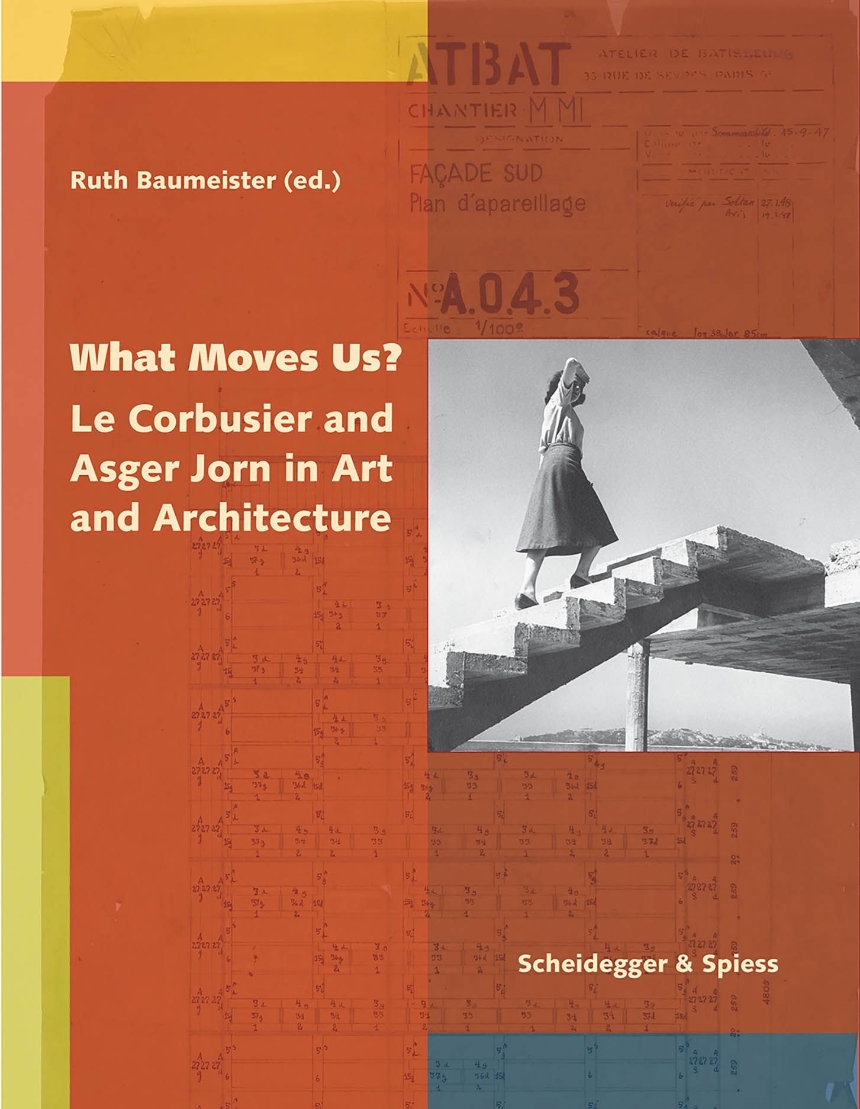9783858817730
Distributed for Scheidegger & Spiess
What Moves Us?
Le Corbusier and Asger Jorn in Art and Architecture
Le Corbusier (1887–1965) is one the most influential architects of the twentieth century. In the Scandinavian countries, his influence is arguably most pronounced in the writings and art of the Danish experimentalist Asger Jorn (1914–1973). Their collaboration on Le Corbusier’s pavilion for the 1937 Paris World Exhibition sparked Jorn’s lifelong fascination with the great architect and with architecture more broadly as an inherently public form of art. At the same time, Le Corbusier started working in the visual arts and began to move from a rational, technological approach to architecture towards a more poetic, materialist approach.
Published in collaboration with the Museum Jorn, Silkeborg, What Moves Us? focuses specifically on the reception of Le Corbusier in Scandinavia, with the relationship between Jorn and Le Corbusier as a thematic thread. The book first highlights the architect’s change of direction and subsequently takes readers through his influence on the young artist. The book’s distinguished contributors explore the relationships that emerged among their artistic theories and practices, including Jorn’s later critique of Le Corbusier. Essays also explore the wider influence of Le Corbusier on Scandinavian architecture and urbanization and consider Le Corbusier alongside the Danish architect Jørn Oberg Utzon and the Aarhus Brutalism movement.
Although countless books have been written about Le Corbusier, this is the first to bring together the radical modernist architect with the situationist artist Asger Jorn.
Published in collaboration with the Museum Jorn, Silkeborg, What Moves Us? focuses specifically on the reception of Le Corbusier in Scandinavia, with the relationship between Jorn and Le Corbusier as a thematic thread. The book first highlights the architect’s change of direction and subsequently takes readers through his influence on the young artist. The book’s distinguished contributors explore the relationships that emerged among their artistic theories and practices, including Jorn’s later critique of Le Corbusier. Essays also explore the wider influence of Le Corbusier on Scandinavian architecture and urbanization and consider Le Corbusier alongside the Danish architect Jørn Oberg Utzon and the Aarhus Brutalism movement.
Although countless books have been written about Le Corbusier, this is the first to bring together the radical modernist architect with the situationist artist Asger Jorn.
210 pages | 164 color plates, 76 halftones | 9 x 11 | © 2015
Architecture: European Architecture
Art: European Art
Table of Contents
Foreword
Jacob Thage
Torben Nielsen
Introduction
Ruth Baumeister
Le Corbusier—the Artist—Architect in Postwar Europe
Brutalism’s Ghosts—Le Corbusier, Art, and War
Stanislaus von Moos
Touch My Axis—Vers une architecture before, L’espace indicible after
Daniel Naegele
Unité d’habitation in Marseille—Experimental Artistic Device
Anna Rosselini
From Earth to Sky, From Darkness to Light—Le Corbusier and the Promenade architecture
Juan Calatrava
Photo Essay
Le Corbusier [lllll] Asger Jorn [Relief]
Heinz Emigholz
Le Corbusier and Asger Jorn—David against Goliath
Polar Attractions—Color, Painting, Architecture
Joan Ockman
Dionysus in Democracy—Jorn Contra Le Corbuser
Nicola Pezolet
The Architecture, The Artist, Two Tents and a Whole lot of Murals
Karen Friis
From Imaginary Exhibitions to Urban Book Spaces—Asger Jorn and Le Corbusier as Architects of the Book
Klaus Müller—Wille
Photo Essay
Au Revoir
Claus Peder Pedersen
Le Corbusier Revisited—Traces in Danish Architecture and Urbanism
Le Corbusier—Recognized and Criticized in Denmark
Leif Leer Sørensen
Parallel Tracks
Poul Bæk Pederson
Brutalism in Aarhus and Le Corbusier
Kjeld Vindum
Exhibition
Selected Works
Reprints
Everclean—A Highly Rational Person
Asger Jorn and Robert Dahlman Olsen
Homes for People or Concrete Castles in the Air
Asger Jorn
Movements
Destinations of Le Corbusier’s and Asger Jorn’s Travels
Rikke Hougaard Szalay
Appendix
Authors’ Biographies
Photo Credits
Imprint
Jacob Thage
Torben Nielsen
Introduction
Ruth Baumeister
Le Corbusier—the Artist—Architect in Postwar Europe
Brutalism’s Ghosts—Le Corbusier, Art, and War
Stanislaus von Moos
Touch My Axis—Vers une architecture before, L’espace indicible after
Daniel Naegele
Unité d’habitation in Marseille—Experimental Artistic Device
Anna Rosselini
From Earth to Sky, From Darkness to Light—Le Corbusier and the Promenade architecture
Juan Calatrava
Photo Essay
Le Corbusier [lllll] Asger Jorn [Relief]
Heinz Emigholz
Le Corbusier and Asger Jorn—David against Goliath
Polar Attractions—Color, Painting, Architecture
Joan Ockman
Dionysus in Democracy—Jorn Contra Le Corbuser
Nicola Pezolet
The Architecture, The Artist, Two Tents and a Whole lot of Murals
Karen Friis
From Imaginary Exhibitions to Urban Book Spaces—Asger Jorn and Le Corbusier as Architects of the Book
Klaus Müller—Wille
Photo Essay
Au Revoir
Claus Peder Pedersen
Le Corbusier Revisited—Traces in Danish Architecture and Urbanism
Le Corbusier—Recognized and Criticized in Denmark
Leif Leer Sørensen
Parallel Tracks
Poul Bæk Pederson
Brutalism in Aarhus and Le Corbusier
Kjeld Vindum
Exhibition
Selected Works
Reprints
Everclean—A Highly Rational Person
Asger Jorn and Robert Dahlman Olsen
Homes for People or Concrete Castles in the Air
Asger Jorn
Movements
Destinations of Le Corbusier’s and Asger Jorn’s Travels
Rikke Hougaard Szalay
Appendix
Authors’ Biographies
Photo Credits
Imprint

